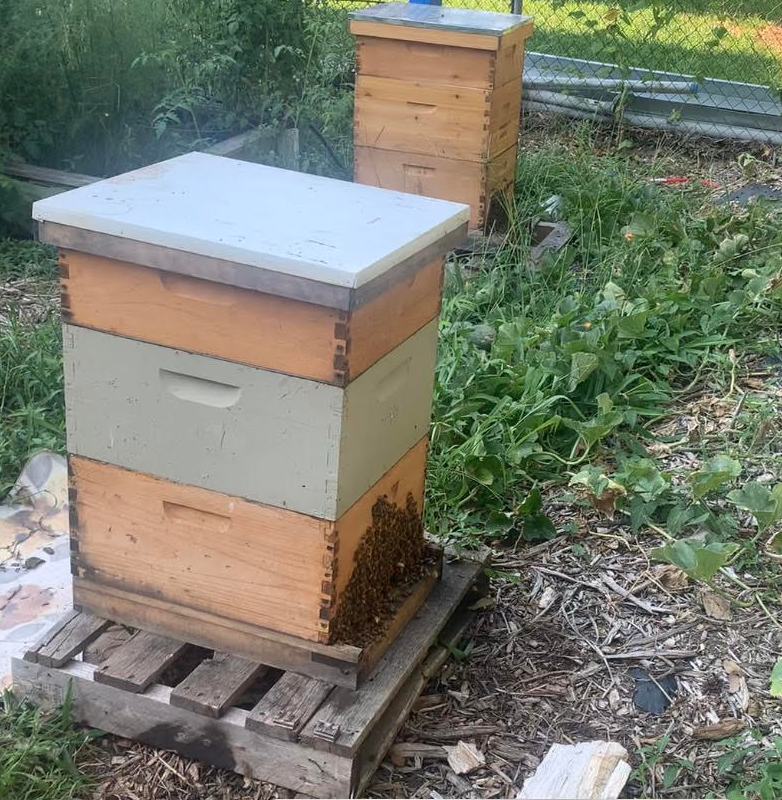Buzzing with Excitement: My Journey in Organic Beekeeping
Hello fellow bee enthusiasts! I just did my first hive inspection last week, and I am ecstatic to share that both hives survived the winter! My girls are looking healthy and active, which is fantastic news. I thought I would use this opportunity to talk about my passion for organic beekeeping and the steps I’ve taken to make it a reality.
 Photo of the girls hanging out last summer
Photo of the girls hanging out last summer
What is Organic Beekeeping?
Organic beekeeping is the practice of maintaining beehives without the use of synthetic chemicals or treatments. This method focuses on natural ways to keep bees healthy and to control pests and diseases, particularly the dreaded Varroa mite. Varroa mites are tiny parasites that feed on the blood of honey bees, weakening them and transmitting diseases that can devastate a colony. Organic beekeepers employ various strategies to control these mites, ensuring the health and happiness of their buzzing beauties.
Meet My Minnesota Hygienic Queens
Last year, I introduced two Minnesota Hygienic queens into my hives. But what are Minnesota Hygienic bees, you ask? These special bees are a strain of honey bees bred for their exceptional grooming and hygienic behavior. They have an incredible ability to detect and remove diseased and mite-infested brood, thus reducing the spread of diseases and mite populations in their colonies.
The Buzz on Minnesota Hygienic Bees: Pros and Cons
While Minnesota Hygienic bees are excellent at keeping mite populations in check, they do have their pros and cons. On the plus side, their superb hygienic behavior helps control diseases and mite infestations, which can lead to healthier colonies and improved honey production. They are also less likely to require chemical treatments, which is a huge win for organic beekeeping enthusiasts like me!
However, there are some drawbacks. These bees can be more expensive than other strains and can sometimes be difficult to source. Additionally, they may not perform as well in colder climates as other hardier bee strains. Drone Frames: A Mite’s Worst Nightmare
In addition to my hygienic bees, I’m using drone frames to attract and trap Varroa mites. Drone frames are designed to encourage bees to lay drone brood, which are male bees that do not contribute to the colony’s honey production. Varroa mites love drone brood because their larger cells and longer development time make them the perfect hosts for the mites’ reproduction.
Freezing Mites (and Drones) in Their Tracks
Once I have a frame full of drone brood, I pull it out and freeze it. While this does mean sacrificing some of my drones, it effectively kills the Varroa mites hiding within. By regularly removing and freezing drone frames, I am helping to keep mite populations under control without using chemicals.
The Mite Count: A True Test of Success
I still need to do a mite count this Spring to see how well these organic methods are working, but so far, I am really impressed with the results. Last year, my hives thrived without any chemical treatments, which is a testament to the power of organic beekeeping. I’ll be sure to update you all with the results of my mite count and any other exciting developments in my beekeeping journey. Until then, keep on buzzin’!
